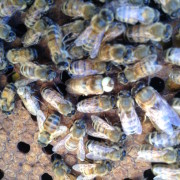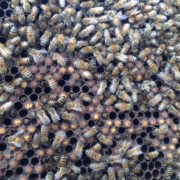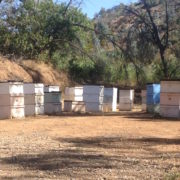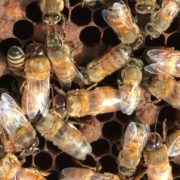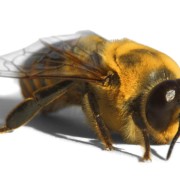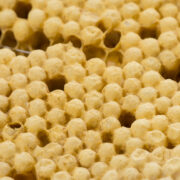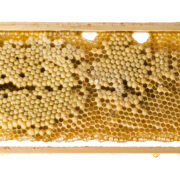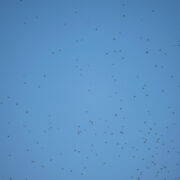Promoting Drone Honeybee Production
For a queen breeder or anyone interested in raising a large number of queens, producing drone honeybees on a large scale requires some planning and foresight. The first consideration – and, perhaps of the highest importance – is having the most desirable breeding stock near and surrounding the apiary at exactly the right time. If you are going to need drones, you obviously want to be raising the highest quality drones from the very best colonies that you have. There is no sense in promoting drone honeybee production in undesirable colonies. But how do you get your best colonies to produce the highest number of drones?
There are several key factors toward encouraging a colony to raise an abundance of drones. Here are the top three in order of importance:
- Pollen and Food Abundance
- Seasonality
- Drone-Laying Space Availability
The most significant factor for abundant drone production is having a plentiful source of pollen. Natural pollen is far and away more superior. And, a substantial quantity of that natural pollen is even better. When an area is naturally rich in pollen, beehives can’t help but to produce drones, regardless of many of the other factors. This is the reason that you will find the majority of California queen producers located in more or less the same area of California – an area that is known to consistently produce enormous amounts of pollen – hence drones, during the critical queen rearing months of April and May.
If you are trying to produce drones in an area that has poor or inconsistent pollen availability, then you either need to aggressively feed these colonies with pollen substitute, or consider moving the colonies – at least temporarily – to a richer area, so that the bees begin to raise drones.
Moving bees to rich pollen areas is often another advantage of California queen breeders. Well before the pollen becomes abundant in their queen rearing apiaries, most California queen breeders move their strongest colonies into almond pollination. The explosion of almond blossom pollen that occurs over the relatively short period of almond bloom turbocharges drone production. In this way, most queen breeders enjoy an abundance of drones and quality drone brood well in advance of queen rearing.
The second key to promoting drone production is the season. April and May – the spring – is the ideal season for drone production. Bees are instinctively aware of the position of the sun and the timing of the seasons. This is why they naturally ramp up worker brood production during the spring, even during times of drought, and then cut back on brood production later in the fall, regardless of the conditions. As the days lengthen in spring, the bees begin to instinctively raise drone brood. This means that if you are trying to promote drone production in a less-than-ideal season such as late summer or fall, you need to compensate by aggressively feeding pollen or a pollen substitute. An abundance of pollen becomes even more important during the less-than-optimal months of the year.
Finally, anytime that you are aiming to promote drone production, you have to provide the queen ample space to lay drone brood. Ideally, providing a frame or two of drone comb during a time of high pollen availability, and during the right season, will almost guarantee having more than enough high quality drones.


